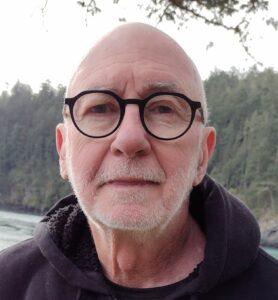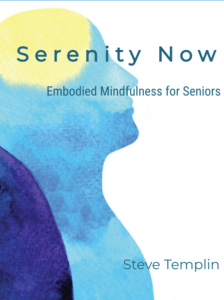Have you noticed that some experiences in your life, often the less pleasant ones, have a habit of repeating? Have you ever asked yourself, why is this happening again?
This post will offer insight on how to make sense of these repeating patterns or themes and more importantly will offer an embodied strategy for helping to resolve them.
While it’s challenging to think of these experiences, and the feelings they stir up, as anything but unwelcome nuisances, or torment from the gods, I’ll share what will hopefully be a more empowering perspective.
What If Your Body Really Is Intelligent?
What if your body, which includes your heart, knew things that your thinking head alone could never know?
What if your body learned and remembered things independently of the brain in your head?
And what if your body was in fact your subconscious mind, and had a way of alerting you when psychological burdens, like buried upsets or traumas, were exacting a toll on your emotional well-being or physical health?
Could it be that bodily felt feelings are your body’s special language for communicating with you, for trying to help you, attempting to wake you up, as opposed to unpleasant experiences to be gotten over, numbed, or distanced from?
The answer to all of these questions is ‘yes’. And the implications are potentially life changing.
There’s a growing body of neurological research and clinical experience in the fields of somatic psychology and trauma therapy that support this notion that your body’s felt experience is an intelligent ally when it comes to healing emotionally and physically.
Your Body is Trying to Get Your Attention
When it comes to repeating themes in your life, what if the real story was that your body was trying to get your attention, over and over again, but since you didn’t know how to listen, the repetitive narrative continues.
Your body is programmed to protect you from being overwhelmed or incapacitated by emotional shocks or traumas. Our bodies have the capacity to store traumatic emotional experiences, to keep them safely partitioned away from awareness so we’re allowed to move forward in life, unconsciously burdened, but nevertheless, trekking on.
This protective response, this storing of emotional energy, is most useful when it’s temporary. When the process lingers it habitually alters the balance of your autonomic nervous system, brain, and biochemistry, leading to our current epidemic of stress or trauma related conditions. Much, if not most chronic mental and physical illness falls into this category.
In a recent post I mentioned that wild animals have the capacity to spontaneously vibrate or shake to release trapped emotional energy. We also have that capacity but instead we tend to spontaneously hold on to the stored energy longer, potentially forever, unless we heed our body’s attempts to get our attention via feelings.
Feelings Are an Invitation to Become Conscious
Descartes’s dictum, “I think, therefore I am”, to this day reflects a cultural bias towards thinking that’s divorced from bodily feelings. More than a bias, ‘thinking’ is so automatic and habitual for most of us that it’s likened to a hypnotic trance that we need help waking from, so feelings serve to wake us up.
Feelings are the biological equivalent of temple bells inviting us to become conscious, present, to breathe, to feel, to wake from the mental trance.
Once we come consciously home to our bodies, to our feelings, our unconscious programming and traumatic events that are frozen in time, begin to thaw and we become more authentically ourselves and more free to stop repeating the past.
And of course, this is easier said than done.
The notion that feelings are an invitation to transformation and healing can be debated but it can also be tested for oneself through direct experience.
Both the research and decades of clinical experience show that feelings, especially once we learn to consciously and safely experience them, lead to transformation and healing.
Use Your Favorite Embodied Practices
I invite you to test this trance breaking notion for yourself. You can do your own embodied research.
Once you become consciously aware of feelings you’re now in a relationship with them that fosters change. Having a ready assortment of practices will allow you to choose the best tool in the moment.
I’ll briefly remind you of a number of the embodied processes that I’m most familiar with for working with your feelings. While these techniques vary in their approach they all begin with noticing feelings in the body.
Focusing. Focusing shows us how to come into a friendly relationship with our feelings which invites them to change. Focusing in its simplest form is a primer for getting out of your head and into the wisdom of your body.
Tapping or Point Holding. The Tapping or Point Holding techniques that use acupuncture points are especially helpful when we’re stuck or there’s just too much emotional energy to deal with comfortably.
HeartMath Techniques. The essence of most of these processes is to combine awareness of feelings along with a felt awareness of the heart while we’re breathing consciously. This is as natural as it gets.
Internal Family Systems. IFS invites us to notice that our feelings are akin to inner, sub-personalities that we can learn to listen too, similar to what we do in Focusing.
Open Focus. Open Focus shows us how to experience feelings as fields of energy that occupy space inside or outside of our body. This altered perception of feelings invites a fluidity that encourages their transformation.
Regardless of which process you prefer, the first step is to become consciously aware of your feelings.
Tie a string on your finger, use an app, ring a bell, or listen to your body’s feeling cues, but somehow find a way to periodically connect consciously with the moment, your felt experience, your breath. Doing this for just ten seconds is very helpful when it comes to breaking a trance.
That’s it. Just think of breaking the trance. And then your body’s innate wisdom becomes consistently more available to guide your health and well-being.
My favorite trance breaker, that I do my best to repeat throughout the day is HeartMath’s Heart Focused Breathing process.
Remember, ten seconds of this is effective for interrupting old ingrained patterns of living in our heads.
Here’s the process. Tune into your heart area in the center of your chest and while feeling into that area you can imagine breathing into and out of your heart area more slowly and a tad deeper than usual. Ideally, a slow breath of 5-6 seconds in and 5-6 seconds out works best. If it helps you can also place your hand over your heart. Here’s the official Heart Focused Breathing instruction sheet.
The best of luck in descending down out of your head and finding the present moment in your bodily experience.


 Steve is a retired Doctor of Oriental Medicine, Acupuncture Physician, and HeartMath Trauma-Sensitive Certified Practitioner with over 35 years of clinical experience in the fields of Energy Medicine, Energy Psychology, and Biofeedback.
Steve is a retired Doctor of Oriental Medicine, Acupuncture Physician, and HeartMath Trauma-Sensitive Certified Practitioner with over 35 years of clinical experience in the fields of Energy Medicine, Energy Psychology, and Biofeedback. 